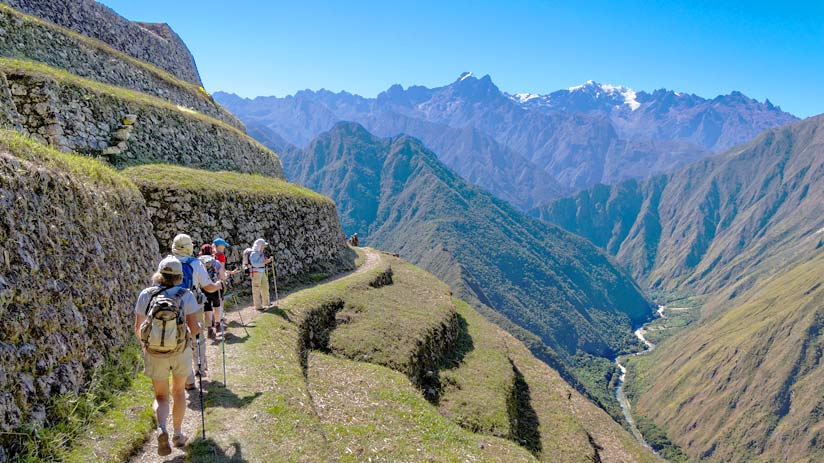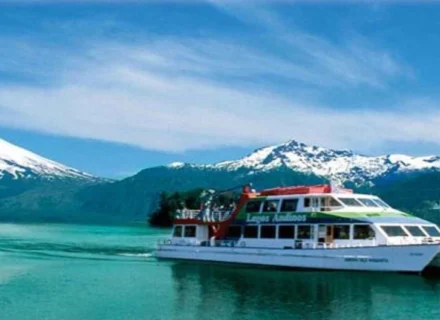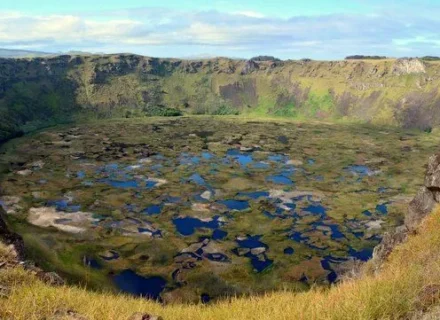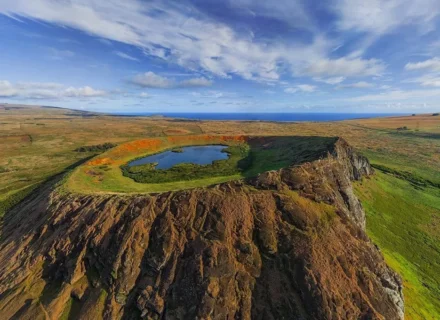Getting to
Peru
Most international travellers fly into Lima’s Jorge Chávez International Airport. Outside of Christmas and Easter, high season (the most expensive time to fly) is around May to October. It’s always best to book early for the best availability and prices.
- Flights to Lima from Auckland via Chile/Argentina and/or Australia take 16 hours plus
- Flights to Lima from Cape Town via Europe or the US take around 25 hours
- Flights to Lima from London direct take 12.5 hours
- Flights to Lima from Los Angeles via Miami, Houston or Atlanta take 12 hours
- Flights to Lima from Sydney via Europe or the US take 22 hours or more
- Flights to Lima from Toronto direct take about 8 hours
- Flights to Cusco are possible with connections in Bogota and Santiago
If you’re travelling to Peru overland independently, it’s possible to book bus services from neighbouring countries Brazil, Ecuador, Colombia, Bolivia and Chile.
Main airport for
Peru
Jorge Chávez International Airport is located 10km from Lima, IATA code: LIM.
Geography and landscape
of Peru
Located in the western part of South America, Peru shares borders with Ecuador, Colombia, Brazil, Bolivia and Chile. It covers nearly 1.3 million square kilometres, making Peru the third biggest country in South America, larger than France and Spain combined.
Peru is a highly diverse country, with an enormous range of landscapes and ecosystems. Over half of Peru’s 31.5 million people live along the 2,400 kilometre-long Pacific Ocean coastline.
Peru’s terrain is divided by the Andes into three very different geographic zones. Along the coast and western edge of Peru, much of the land is arid, with deserts, sandy beaches and valleys. The highlands are dominated by the Andes and Peru has many peaks that tower over 5,000 metres. The northern Andes are lower and more humid, the central Andes are the tallest, steepest and coldest, and the southern Andes are wider and flatter, also known as the high Andean plateau
The east of the country is dominated by vegetation and the sprawling Amazon Jungle. Jungle covers over half of the country.
Interesting fact:
Being a consultative party to the Antarctic Treaty, Peru also has a territory of 60 million hectares on the continent, as well as a scientific station named ‘Machu Picchu’!
Culture, Religion
and Etiquette
Peru’s population is made up of roughly 45% indigenous people, 37% mestizo (a mixture of Spanish and indigenous heritage), 15% of European origin and 3% other. Peru is predominantly Roman Catholic and over 80% of people follow this faith, with 13% Evangelical and 6% other. The country is almost half Amerindians and it is important to be respectful of the local people, many of whom view the term ‘indio’ as derogatory, preferring indígenas.
Peruvians are generally quite formal and handshaking is the most common form of meeting and greeting. Women may kiss on the cheek but it depends on the situation and visitors should follow the lead of the locals.
Learning basic greetings in Spanish is an excellent way to break the ice and it is good manners to greet people properly including shopkeepers and taxi drivers. A simple buenos dias (good morning), buenas tardes (good afternoon) or buenas noches (good evening) will go a long way.
The local view on punctuality has been affectionately labelled ‘Peruvian time’ and it is not considered rude for Peruvians to arrive half an hour to an hour late for personal meetings.
Photography
From its arid coastline to misty rainforests, majestic Inca ruins to buzzing modern cities, grumpy llamas to fresh-faced village kids, Peru is extremely photogenic and highly instagrammable. But since photography can be intrusive, it’s best to be polite and follow some basic etiquette.
Photographing the Locals
Peruvians are generally very friendly and generous about being photographed if asked before you point and click, but no means firmly, no. Be particularly considerate of indigenous people and locals in smaller market towns – their colourful traditional clothing may look glorious on your screen, but if you don’t ask in advance their frosty faces will say it all. Kids can be very friendly and excited about taking portraits and selfies, just be prepared to show them the screen straight away.
Locals in touristy areas who are clearly dressed up to the nines to model for photos (often accompanied by a super clean, richly decorated llama) will expect a propina (tip) – 50 centivos or 1 sole should be fine for a couple of shots. However, if you’re innocently framing up a street scene or landscape and someone demands a propina, it’s completely fine to decline.
Restrictions in Public Places
There are various photography restrictions in Peru – museums and galleries usually operate the no flash rule. Be mindful that most churches in Peru are actively used by local people, so it’s best not to disturb worshippers, and in fact most religious sites ban photos (and particularly flash photography). Tripods, any other kind of camera support and drones are all banned at Machu Picchu.
Avoid Photographing the Military & Police
It’s best to avoid taking photos of police or military personnel without their explicit permission – they’re often carrying guns (which makes for great pictures) but may not welcome the attention (and they’re carrying guns). Common sense would dictate that taking photos of police in action is not a smart move… at the least you’d have your camera confiscated on the spot. Taking photos of military buildings is prohibited and can also result in confiscation if you’re caught.
Asking for Permission to take a Photo
If you’re looking for a polite way of asking to take someone’s photo in Peru, you could say: “Me permite sacar una foto?” (Would you allow me to take a picture?) or “Le podría sacar una foto a usted por favor?” (Could I take a picture of you please?)
Languages Spoken
The most widely spoken language in Peru is Spanish, and Aymara and Quechua are also spoken. English is also widespread with most in the tourism and hospitality industry speaking English.
Capital City
Lima
Lima is the executive, judicial and commercial capital, largest city and international transport hub of Peru. It sits near to the coast and retains some of the colonial elegance that led it to be considered the most beautiful city in Latin America in the 16th and 17th centuries.
Other Important Cities of Peru
Cusco
Nestled in the Andes, Cusco is a buzzing colonial city and launchpad for those wishing to hike the Inca Trail and visit Machu Picchu. Its striking mixture of Spanish Colonial and Inca architecture, surrounding ruins and lively nightlife make it an attractive stop.
Pisco & Nazca
Pisco and Nazca are located in the coastal area south of Lima and highlights include ancient remains, wildlife and desert scenery.
Arequipa
Arequipa, lying inland from this region in the south of the country, provides access to the nearby Colca Canyon where condors can be seen gliding on the thermals. The city is home to the stunning Santa Catalina Monastary as well as the suburb of Yanahuara which boasts unique buildings set in volcanic white rock.
Puno
Near the Bolivian border, Puno is the main town and port for Lake Titicaca, the world’s highest navigable lake and home of enchanting indigenous communities.
Puerto Maldonado
The Amazon Jungle covers over half of Peru and the jungle city of Puerto Maldonado is the main gateway to explore it.
Visas
Tourist visas are not required for citizens of the UK, US, Canada, Australia, New Zealand and South Africa, for stays of up to 183 days.
Vaccinations & travel health
Vaccines
Travel health advice for Peru may vary slightly according to your country of origin. In the UK, travellers are recommended to stay up-to-date with routine vaccinations (including but not limited to) MMR (measles-mumps-rubella), and diptheria-tetanus-polio vaccine.
There are no compulsory vaccines required for entry into Peru. Most travellers are recommended to have tetanus and hepatitis A vaccinations for visits to Peru. Some travellers may be recommended to have vaccinations for chicken pox, hepatitis B, typhoid, rabies, tuberculosis and Yellow Fever.
Mosquitos & Malaria
Take precautions to avoid mosquito bites throughout the day, from dawn to dusk, and at night, as there are mosquito-borne diseases such as yellow fever, Zika virus and dengue present in Peru which cannot be prevented by vaccines.
Malaria is present in the Amazon basin, so it is important to do your own risk assessment with a GP or travel health specialist to decide whether you should take antimalarial medication.
Altitude Sickness
Oxygen levels are lower at high altitude, so there is a risk of altitude sickness when travelling to locations at 2,500 metres (8,200 feet) or higher. If you ascend gradually, your body should be able to adjust without too much difficulty. However, a sudden change of altitude can make it more difficult (though not necessarily impossible) for your body to acclimatise. In Peru, high altitude destinations include Machu Picchu (2,430m), some points on the Inca Trail Trek (4,200m), Cusco (3,399m), Puno (3,827m), and the island homestays on Lake Titicaca.
If you experience headache, loss of appetite, nausea, vomiting, dizziness, fatigue, weakness or sleep disturbance, speak to your tour leader or local guide and rest – these can be signs of acute mountain sickness (AMS). Local guides may recommend taking it slowly, resting frequently, to drink a mate (tea) made out of coca leaves or chew coca tablets (sugary pastilles) to help with mild symptoms.
However, if you experience confusion, altered consciousness, incoordination, increasing breathlessness, chest tightness or blood when you cough, these are indicators of the much more severe and potentially life threatening HAPE and HACE conditions that need urgent medical attention – seek help immediately if you or anyone in your group feels ill.
If you have any pre-existing medical conditions, it’s important to discuss this with your travel health specialist before departure. Also, ensure that your travel insurance covers you at the highest altitude you’ll visit, including helicopter evacuation (a rare, worst case scenario event).
Get Medical Advice Before You Travel
Travel health advice for Peru may vary slightly according to your country of origin. In the UK, travellers are recommended to stay up-to-date with routine vaccinations (including but not limited to) MMR (measles-mumps-rubella), and diptheria-tetanus-polio vaccine.
We strongly recommend that you seek country-specific, professional medical advice, ideally 4 to 6 weeks before you travel. Even if you’ve booked closer to your departure date, it’s still worth seeing someone. A travel health expert will consider the destination, your medical history and planned activities, so take your itinerary along with you to the appointment. See the CDC’s travel advice or Public Health England’s travel advice for further information.
Is it safe to drink tap water in Peru?
Unfortunately it’s not safe for visitors to drink the tap water in Peru due to the risk of illness from water borne diseases, bugs and parasites. Boiling and filtering is sometimes not thorough enough at hotels, so it’s best to avoid an offer of a top up.
It’s safest to buy bottled water that is properly sealed, and opened by you. Disinfected water, ice made with bottled or disinfected water, coconut water if opened in front of you, bottled fizzy drinks, hot coffee or tea, and pasteurised milk should be fine. Remember to use bottled water to brush your teeth too.
Stay clear of tap or well water and ice made of tap or well water, any drink made or diluted by tap water, or unpasteurised milk.
Electricity and Plugs in Peru
The voltage in electrical sockets in Peru is 220V at 60HZ. Most European, Australian or African devices will be fine plugged in to a Peruvian outlet because they’re built with a similar voltage in mind – 220-250V is the norm. If you’re travelling from the US where voltage is 120-150V, check your device is built for dual voltage before plugging it in, or bring a voltage converter to avoid frying it.
The most commonly found electrical plug type in Peru is type A, which has two parallel flat prongs, and often but not always, a hole at the tip. Type C has two round prongs and is commonly found in Europe as well as South America.
Take a universal power adaptor with you to ensure you can make the most of any charging opportunity. They’re also available in tourist shops and markets, and they’ll be twice the normal price at the airport.
Emergency calls
Save these numbers on your phone in case of emergency in Peru:
- Police: 105 – for the nationwide dispatch service
- Ambulance: 106 – for life-threatening situations, or 225 4040 (Lima – Alerta Med); 467 4861 (Lima – Clave 5); 241 1911(Lima – Plan Vital)
- Fire and rescue: 115 – for fire and non life-threatening medical situations
- Tourist police: 0800 22221 – operates 24/7 and can handle enquiries in English
- Civil Defence: 119 – in case of earthquake or flood
Travelling as a single woman
Peru is generally a very friendly, safe and welcoming destination for international tourists. The vast majority of locals are kind, generous, helpful and accommodating to a fault, and most solo female travellers have a great time here. Occasionally Western women attract unwanted attention in Peru, such as verbal and sexual harassment, particularly in crowded areas such as bars, marketplaces, railway stations and busy public streets. Stay alert, stay aware and use your judgement, just as you would anywhere else – if you feel unsafe, keep moving and seek help from tourist police.
Theft is rife in Peru, and solo women travellers are by no means the only targets. Keep valuables out of sight, ideally in a bag rather than pocket, and always keep that bag close to you – not on your back, under a table or hanging on the back of a chair. When using an ATM, try to use one at a supermarket, bank or large commercial building, ideally with someone else with you, particularly at night.
It’s common sense to take into account cultural differences and potential differences in expectations in social interactions. For instance, what would be considered a friendly conversation at a bar at home may be misconstrued as flirtation in Peru. Friendly nudges, pats on the arm and other casual touches during conversation can also be mistaken for flirting, and may attract an unwelcome response. Just as you would at home, keep an eye on your drink and be careful about accepting drinks from strangers.
If you’re heading out at night, it’s a good idea to travel with others. Let your hotel and/or Tucan Travel tour leader know where you’re going and to take an official, registered, licensed taxi or mototaxi (three wheeler) that has been recommended and booked by your hotel. It’s not advisable to take an unknown, unbooked or surprisingly cheap taxi or mototaxi alone late at night – there have been cases of bogus taxi robberies, with a cheap fare used as a lure. You can always stop and change to a different taxi if you’re concerned about the driver or the standard of driving.
Being a popular destination, there’s every chance you’ll bump into a lot of the same travellers at different sites along your route in Peru, so it’s very possible to strike up friendships and find people to meet up with as you go. Group tours also provide an opportunity to make new friends travelling on a common itinerary – 60% of Tucan Travel tours are made up of solo travellers enjoying the company of like-minded adventurers.
Keep your friends and family up-to-date with your adventures on social media, text or the odd email – they can always raise the alarm if they don’t hear from you as expected.
Wifi and internet access
Wifi is widely available at hotels in cities and large towns, but it’s less common to find internet access at guesthouses and homestays in Peru. If you’re not travelling with a laptop or smartphone, there may be an internet-enabled computer available at your hotel. Internet speed is generally only slightly slower than you’d expect at home, but can vary widely according to where you’re staying. You’ll be able to to send emails, check social media, Google searches, watch YouTube and so on, but don’t expect flawless Netflix streaming, and downloading large files can be pretty tedious.
Internet cafes are available in Peru, particularly in cities and towns, and sometimes offer ‘net-to-net’ capability so that you can do free Skype calls as part of your paid time, saving on expensive phone calls. Many have wifi access, so it may be worth taking along your own laptop or smartphone along. You can expect to pay anything from US$1 an hour, more in touristy areas. You may pay a fixed price in advance, or feed a running meter – so keep a few coins handy for this.
If you don’t spot an internet cafe, you can always pop in to a local bar or cafe, grab a coffee and log in to wifi while you people watch – just make sure you keep your belongings close to you as opportunistic bag theft is rife in Peru.
Mobile data is fairly quick in larger towns and all cities (around 3G). However, it isn’t uncommon to completely lose signal in the mountains and jungle areas. Even with the help of a personal wireless hotspot device you may find it a struggle to connect in rural areas.
Tip!
Latin American keyboards are a bit different from English ones and it can be a bit of a faff to find the @ key (known as arroba in Spanish). If the standard Shift+@ doesn’t work, try Control+Alt+@ or hold down Alt and type 64.
Time Zone
Peru (PET) is -5:00 (five hours) behind London (GMT/UTC). Peru does not have a daylight saving time clock change, but allowances should be made for summer time clock changes elsewhere. Visit timeanddate.com to calculate the time difference for your location.
Getting Around
Peru is quite vast but still relatively easy to get around by land, with decent range of public transport options including nationwide bus and coach services.
Intercity bus services on paved roads are generally of a very good standard – but however good the suspension in the bus, you’re bound to have a bumpier ride in the back seat.
Air
Many Tucan Travel group tours offer internal flights between certain locations to cut down time wasted on Peru’s busy, winding roads. We’ll arrange your flights from Lima to the Amazon or Lima to Arequipa, the Amazon to Cusco and any other shortcuts we can take to streamline your itinerary.
Taxis
Taxis are common in all towns and cities, and even some villages. It’s rare to find metered taxis, and tourists are likely to be charged more than locals, so it’s important to negotiate your fare before you accept a ride. It’s best to take official, registered taxis that you have pre-booked with a hotel, rather than hailing them in the street. Keep your valuables tucked out of sight in the boot of the vehicle while you’re on the road.
Taxi drivers are sometimes willing to work for a fixed, pre-agreed fee (plus tip) as full-day chauffeurs, so it’s worthwhile asking your hotel for a referral if you’re short on time to visit the city sights, or you’re planning your own day trip. Be prepared to insist on following your own itinerary – drivers may try to dissuade you from going to sites where they don’t make a commission.
Mototaxis
Also known in other parts of the world as tuk-tuks, bajajs or rickshaws, you can find a three-wheeler mototaxi in many places in Peru, although they are less common in the larger cities of Cusco and Lima. Your hotel reception should be able to give you a rough guide as to the current price for a trip to specific local sights, restaurants or restaurant areas. Mototaxis found closest to hotels and tourist sites are likely to charge higher fares than those further away. Avoid any mototaxis that look particularly roughed up – it may be an indicator of the driver’s style on the road.
History
Peru is listed as one of the six cradles of civilisation (others include China, Egypt and India), characterised by the combination of urbanisation and agricultural advancement. The earliest evidence of a civilised society appears at Caral, an archaeological site north of Lima which is believed to be the oldest city in the Americas, 4,000 years older than the Incas. From around 1200 BC to 200 AD, village life and agriculture became established, this time is referred to as the Formative Era. It is during this time that the Chavin Cult took root and became widespread, based on the worship of nature spirits and the feline creator god.
From 200 to 1100 AD, various distinct culture emerged including the Mochica and the Nasca. The Inca Empire emerged from 1200-1532 AD and established a period of unity as they took over rival cultures. The Incas were initially based in the valleys around Cusco and expanded their control to the coast and into Bolivia, northern Chile and southern Colombia. The Inca Empire’s over-extension eventually led to civil war, tearing the empire asunder.
In 1532, Spanish explorers led by Francisco Pizzaro arrived in the Inca Empire. Taking advantage of the civil war, Pizzaro captured Inca ruler Atahualpa and massacred thousands of Inca warriors with the help of mounted cavalry, canons and the element of surprise. With Atahualpa held captive, Pizzaro was essentially in control of the Inca Empire and ransomed him for gold, before eventually killing him. Pizarro then moved down to Cusco, installing a puppet emperor and in merely a few years had replaced the empire with a working colonial model. Alongside colonialism, disease was the greatest threat to the Inca society and in less than 50 years the population dropped from 32 million to only five million due to ailments such as smallpox, bubonic plague and influenza.
Peru’s riches made it important and Lima became the seat of one of two Spanish vice-royalties in the Americas. Gold, silver and other treasures were extracted from all over Peru, sent to Lima and from there onto Spain via Panama. Spanish conquerors extracted tribute from local people and took over towns, attempting to convert local populations to Christianity. There were a number of native rebellions and protests over harsh treatment.
By the late 18th century, the world was changing. The North American colonies were gaining independence and Peru’s people at all levels of society were discontent. When San Martin arrived in Peru, having already liberated Argentina and Chile he declared Peruvian Independence on July 28, 1821. The following year, San Martin met with Simon Bolivar, who had previously freed Venezuela, Colombia and Ecuador and left Bolivar to continue liberating Peru. Despite gaining independence, Peru still had trouble including a brief war with the Spanish in 1866 and another with Chile in 1879-83 over natural resources in southern Peru, which they lost along with a sizeable portion of land.
The 20th century was characterised by a series of military coups and dictatorships, until civilian rule returned in 1980. From the 1980s to 1990s Peru was terrorised by Maoist guerilla group Sendero Luminoso, and during this time between 40,000 and 60,000 people died or disappeared. By the late 1980s, Peru’s economy was in ruins with hyperinflation and regular demonstrations and protests. President Alan Garcia was exiled after being accused of embezzling millions of dollars (although he would later be voted back in as president in 2006). In 1990 Alberto Fujimori was voted in as president and began a plan of severe austerity measures that were labelled ‘Fujishock’ and were able to stabilise the economy but at a massive cost to its people. Since the beginning of the 21st century Peru has enjoyed greater stability and economic growth.



